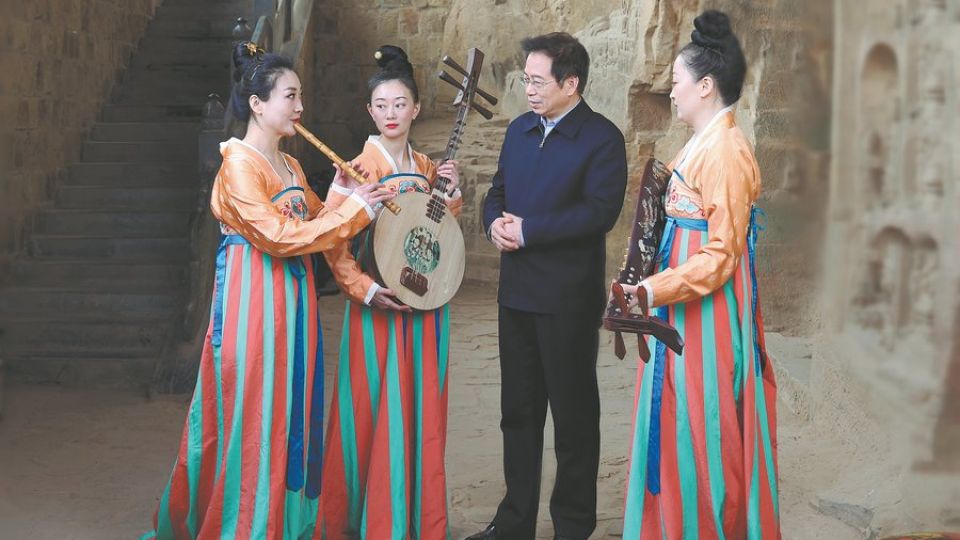March 12, 2024
BEIJING – Delicately digging away layer by layer with the “archaeological artifact” Luoyang shovel (an archaeological tool), and brushing away dust, an unknown “treasure” is slowly revealed. It could be a miniature replica of an ancient marvel like a bronze tiger tally, a rabbit-head seal, a bronze Buddha, or even silver plaque.
Uncovering the past has never been more exciting. Thanks to the Henan Museum’s innovative archaeological blind box (firstly introduced in 2019), enthusiasts can experience the thrill of discovery firsthand.
But this is just the beginning of the museum’s renaissance. From captivating cultural products to collaborations with popular TV shows like National Treasure and Wonderful Night of the Lantern Festival, Henan Museum is making waves in the world of cultural innovation.
With 2.7 million visitors and over 39 million yuan ($5.4 million) in revenue from cultural products last year, the museum is not just preserving history, it is shaping the future of cultural exploration.
Ma Xiaolin, director of the Henan Museum and member of the Chinese People’s Political Consultative Conference National Committee, emphasizes the importance of bringing history to life. He believes that static displays aren’t enough and that instead, innovative ways of making artifacts and exhibitions more engaging and dynamic are needed.
“By finding the intersection between traditional culture and modern life, even ancient relics can become trendy and win fans,” he says.
The Henan Museum has been a pioneer in this direction, making use of a variety of approaches including exhibitions, educational programs, digital outreach, and cultural product development.
Ma says that over the past year, significant progress has been made in the use and promotion of artifacts around the country.
For instance, the understanding of the origins of Chinese civilization has deepened. Thanks to major archaeological discoveries and research results, numerous exhibitions and initiatives have promoted the creative transformation of traditional Chinese culture, resulting in the development of a wide range of cultural and creative products.
As the two sessions unfolds, Ma continues in his role as a member of the 13th and 14th Chinese People’s Political Consultative Conference National Committee. Since 2018, he’s been advocating for cultural heritage preservation, with the aim of bolstering both the protection and the use of cultural relics.
This year, he presents several proposals, including ones to establish a coordinated compensation mechanism for heritage protection and archaeological site parks, and another to tackle the challenge of disseminating Chinese culture internationally in the social media era.
Ma stresses the vital need to protect cultural relics, and sees this as a long-term task that demands continuous dedication. He says that people should cherish cultural heritage as much as they do their own lives, to keep its brilliance alive.
He also highlights the significance of leveraging social media to enhance the international influence of Chinese culture. He views museums as vital components in China’s modern public cultural service system. “Museums play a crucial role in preserving and passing on human civilization, especially in promoting the rich heritage of Chinese culture, and its interaction with other civilizations,” Ma says.


